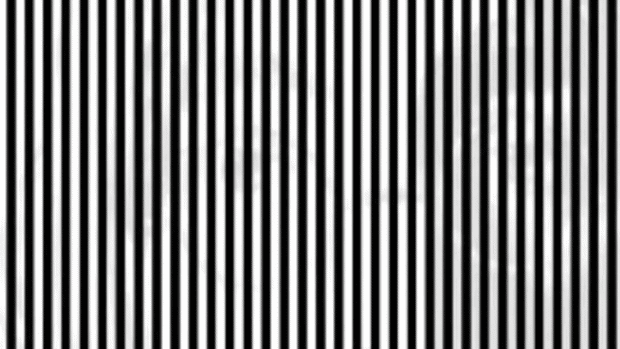Can you guess the celebrity hiding in this brain-frazzling optical illusion?

One black and white grid is taking over the internet.
The optical illusion is hard to look at but worth it as it holds the portrait of one popular celebrity.
The Sun has reported there are a few tricks to reveal the beloved celebrity hiding in the black and white dotted illusion. The first is shaking the device the illusion is displayed on to an angle. While another option is staring at the grid while moving away from your phone or PC, the publication claimed this is the most effective method.
After staring at your screen for a while you will soon notice the famous face belongs to one of the greatest pop icons of all time.
Michael Jackson.

Speaking to the Sun, Dr Gustav Kuhn, psychologist and human perception expert at London's Goldsmiths University, said the puzzle is a reflection of how our brains process information.
"Our eyes encode vast amounts of messy sensory information, and our brain uses clever tricks to disambiguate this information to try to make sense of what it is we are looking at," Dr Kuhn said.
"What you see is results of vast amounts of neural computation, mixed with a bit of guesswork.
"For example, when you stare at a bunch of trees, you can interpret this as a forest or a tree.
"What you are seeing depends on which aspect of the scene you are focusing on."

He went on to compare the illusion of the famous Billie Jean singer to similar monochrome-grid illusion that hides an image of a panda adding, "In the panda illusion, information is encoded at different scales, and depending on which scale you focus on (i.e. the trees or the forest) you will either see a bunch of lines, or the bigger picture – the panda."
The dotted image is reportedly a new take on Magic Eye illusions which opted for swirls or lines to hide an image.
Meanwhile, Professor Fiona Macpherson, an expert at the University of Glasgow's Illusion Index, explained the science behind moving further from the image to reveal the illusion.
She said, "The panda image has a certain spatial frequency when it is a certain distance away from you.
"The closer the image is to you, the lower the spatial frequency, and the further away it is, the higher the spatial frequency.
"In short, there are more black and white lines that fall on the light-sensitive portion of the back of your eye the further the image is away from you."
While optical illusions are perfect for a bit of fun they also hold great value for scientists and help researchers study the inner workings of the mind and how it reacts to its surroundings.
"We typically take perception for granted, and rarely think about the hard work that underpins everyday tasks, such as seeing a cup of coffee in front of you," Dr Kuhn told The Sun.
"Visual illusions highlight errors in perception, and they provide important glimpses into the hidden neural processes that allow us to see the world around us."
He stated illusions are important to our understanding of the brain.
This article was first published by the NZ Herald and is republished here with permission.

